Have you ever wondered what makes feta cheese so irresistibly versatile? Whether it’s the tangy punch of Greek feta, the creamy richness of sheep’s milk feta, or the unique character of Bulgarian feta cheese, this beloved ingredient has a way of elevating any dish. But what if you’re out of feta or need a feta cheese alternative? Don’t worry—there are plenty of delicious options, from French feta to halloumi cheese substitutes, that can save the day. Keep in mind that authentic Greek Feta has a Protected Designation of Origin (PDO) status, ensuring it is produced in specific regions of Greece following traditional methods
In this recipe, we’ll explore the magic of feta cheese, diving into its rich flavors and uncovering how its simple feta cheese ingredients—like sheep’s or goat feta cheese—create such a distinctive taste. Plus, we’ll show you how to make the most of its protein-rich, low-calorie profile (yes, even the calories in feta cheese are worth celebrating!). Whether you’re a feta fanatic or new to this cheese that is white, get ready to fall in love with its savory charm. Let’s get cooking!
Key Benefits of Feta Cheese
Feta cheese isn’t just a delicious addition to your meals—it’s a nutritional powerhouse with a rich history and incredible versatility. Whether you’re using Greek feta, Bulgarian feta cheese, or even a feta cheese alternative, this tangy, crumbly cheese brings both flavor and health benefits to the table. As your culinary guide, I’m here to show you why feta deserves a permanent spot in your kitchen. For more cheesy inspiration, check out my article on Cheese Lovers’ Night In, where I share creative ways to enjoy feta and other cheeses. Let’s break it down:
1. Rich in Nutrients
- Protein-packed: With about 4 grams of protein per ounce, feta cheese is a great way to add a protein boost to salads, pastas, or snacks.
- Calcium-rich: Feta is an excellent source of calcium, supporting strong bones and teeth.
- Low in calories: At just 75 calories per ounce, it’s a guilt-free way to add flavor to your dishes.
2. Gut-Friendly and Lactose-Friendly
- Feta is made from sheep’s milk or a blend of sheep’s and goat feta cheese, which contains less lactose than cow’s milk. This makes it easier to digest for many people.
- It’s also a source of probiotics, which promote a healthy gut and improve digestion.
3. Versatile and Flavorful
- From Greek salads to baked dishes, feta’s tangy, salty flavor pairs well with almost anything.
- It’s a star ingredient in Mediterranean cuisine, but it also shines in modern recipes like watermelon feta salad or baked feta pasta.
4. Easy to Substitute
- If you’re out of feta, don’t worry! There are plenty of feta cheese substitutes like French feta, halloumi, or even vegan alternatives that can mimic its unique taste and texture.
5. Cultural and Culinary Heritage
- Feta cheese has a rich history, with Greek feta being the most well-known variety. However, Bulgarian feta cheese and French feta offer their own unique twists, making it a cheese with global appeal.
Pro Tip: When buying feta, look for varieties made with sheep’s milk feta cheese or a blend of sheep’s and goat’s milk for the most authentic flavor. If you’re watching your sodium intake, soak the feta in water for 10-15 minutes to reduce its saltiness before using it in your recipe.
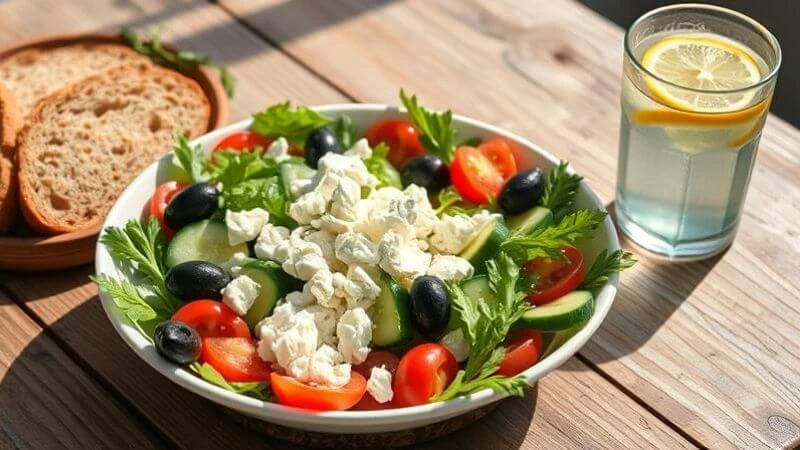

How to Choose and Store Feta Cheese
Choosing the perfect feta cheese can make all the difference in your recipe. Whether you’re grabbing a block of Greek feta, exploring the creaminess of Bulgarian feta cheese, or experimenting with a feta cheese alternative, here’s everything you need to know to pick the best option and keep it fresh. For detailed nutritional information, you can check the USDA FoodData Central
How to Choose the Best Feta Cheese
- Check the Ingredients:
- Authentic feta is made from sheep’s milk feta cheese or a blend of sheep’s and goat feta cheese. Avoid products labeled “feta-style” if you’re looking for the real deal.
- Look for keywords like “PDO” (Protected Designation of Origin) on Greek feta to ensure it’s traditionally made.
- Consider the Texture:
- Crumbly and firm feta is perfect for salads, while creamier varieties like French feta work well in spreads or dips.
- Taste the Difference:
- Greek feta is tangy and salty, Bulgarian feta cheese is milder and creamier, and French feta is buttery and smooth. Choose based on your flavor preferences!
- Explore Alternatives:
- If you need a feta substitute, try halloumi, ricotta salata, or even a vegan option made from tofu or nuts.
How to Store Feta Cheese Properly
- Keep It Brined: Store feta in its original brine or make your own by dissolving 1 tablespoon of salt in 2 cups of water. This keeps it moist and flavorful.
- Use an Airtight Container: If you’ve opened the package, transfer the cheese to an airtight container and cover it with brine.
- Refrigerate: Feta should always be stored in the fridge, ideally at 35-40°F (2-4°C).
- Freeze for Longevity: Need to store it longer? Wrap feta tightly in plastic wrap and freeze for up to 3 months. Thaw in the fridge before using.
Pro Tips for Using Feta Cheese
- Soak to Reduce Saltiness: If your feta is too salty, soak it in water or milk for 10-15 minutes before using.
- Crumble with Ease: For perfectly crumbled feta, use a fork or your fingers. If it’s too firm, let it sit at room temperature for 10 minutes.
- Pair It Right: Feta pairs beautifully with olives, tomatoes, cucumbers, and herbs like mint and oregano. Try it in a classic Greek salad or a modern watermelon feta salad.
Did You Know?
Feta cheese has been enjoyed for thousands of years, with Greek feta being one of the oldest cheeses in the world. Its unique flavor comes from the sheep’s milk feta cheese and traditional brining methods that have been passed down through generations.
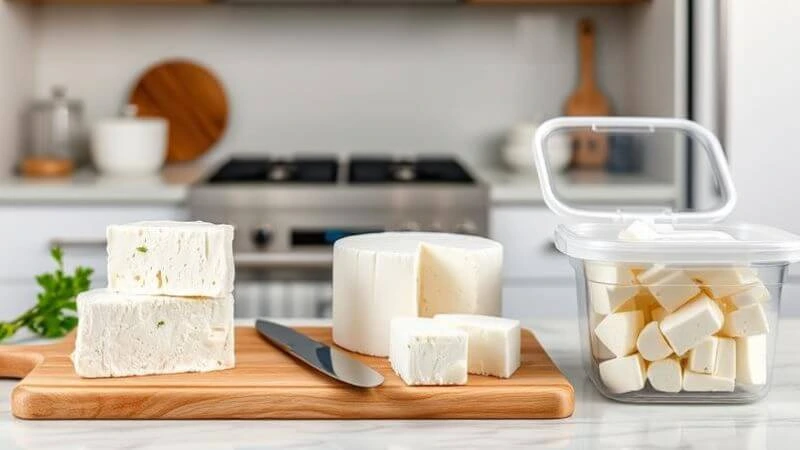

How to Make a Creamy Baked Feta Pasta
If you’re looking for a dish that’s equal parts comforting and impressive, this creamy baked feta pasta is your answer. Featuring the rich, tangy flavor of feta cheese, this recipe has taken the internet by storm—and for good reason! Whether you’re using Greek feta, Bulgarian feta cheese, or even a feta cheese alternative, this dish is a crowd-pleaser that’s surprisingly easy to make. Let’s get started!
Tips for the Best Baked Feta Pasta
- Choose the Right Feta: For the creamiest results, use sheep’s milk feta cheese or a blend of sheep’s and goat feta cheese.
- Add Protein: Stir in grilled chicken, shrimp, or chickpeas for a heartier meal.
- Customize the Veggies: Add spinach, zucchini, or roasted red peppers for extra flavor and nutrition.
Why This Recipe Works
- Minimal Effort, Maximum Flavor: With just a handful of ingredients, this dish delivers a restaurant-quality meal.
- Versatile: It’s perfect for weeknight dinners, potlucks, or even meal prep.
- Crowd-Pleasing: The creamy, tangy sauce paired with sweet roasted tomatoes is a flavor combination everyone loves.
Pro Tip:
If you’re out of feta, try this recipe with halloumi or a vegan feta alternative. The result will still be deliciously creamy and satisfying!
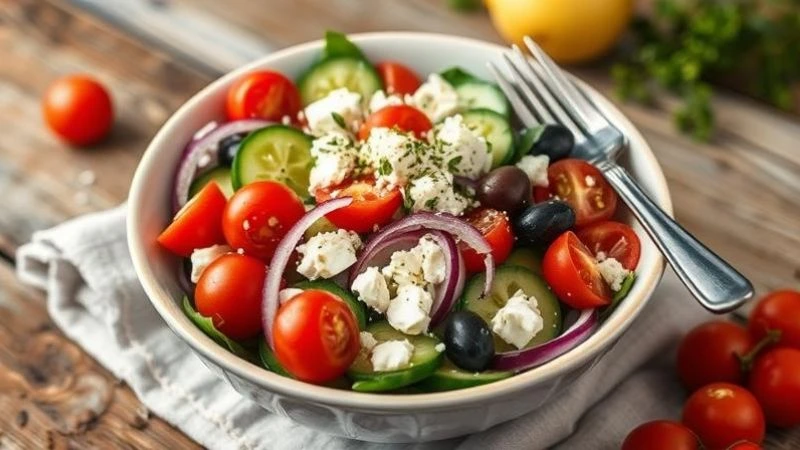

Pro Tips and Variations for Cooking with Feta Cheese
Feta cheese is one of the most versatile ingredients in your kitchen, and with a few clever tips and creative twists, you can take your dishes to the next level. Whether you’re using Greek feta, Bulgarian feta cheese, or a feta cheese alternative, these pro tips and variations will help you make the most of this tangy, crumbly delight. Let’s explore!
Pro Tips for Cooking with Feta
- Balance the Saltiness:
- Feta is naturally salty, so taste your dish before adding extra salt. If it’s too salty, soak the feta in water or milk for 10-15 minutes before using.
- Choose the Right Texture:
- For salads, use crumbled feta cheese. For baking or grilling, opt for a block of sheep’s milk feta cheese or goat feta cheese, which holds its shape better.
- Pair It Perfectly:
- Feta loves fresh herbs like mint, dill, and oregano. It also pairs beautifully with sweet ingredients like watermelon, honey, or roasted beets.
- Store It Right:
- Keep feta in its brine or a saltwater solution to maintain moisture and flavor. If you’ve opened the package, transfer it to an airtight container and refrigerate.
Creative Variations to Try
- Grilled Feta:
- Slice a block of feta, drizzle with olive oil, and grill for 2-3 minutes per side. Serve with crusty bread and a drizzle of honey for a stunning appetizer.
- Feta-Stuffed Peppers:
- Mix crumbled feta with herbs, breadcrumbs, and a touch of olive oil. Stuff into mini bell peppers and bake at 375°F (190°C) for 15-20 minutes.
- Feta and Spinach Filo Pie:
- Layer filo pastry with a mixture of sautéed spinach, crumbled feta, and a pinch of nutmeg. Bake until golden for a delicious twist on spanakopita.
- Watermelon Feta Salad:
- Combine cubed watermelon, crumbled feta, fresh mint, and a drizzle of balsamic glaze for a refreshing summer dish.
- Feta Dip:
- Blend feta with Greek yogurt, garlic, and a squeeze of lemon for a creamy dip. Perfect with pita chips or veggie sticks!
Feta Substitutes for Every Occasion
- For Salads: Try ricotta salata or queso fresco for a similar crumbly texture.
- For Baking: Halloumi or paneer can mimic feta’s ability to hold its shape when heated.
- Vegan Option: Use tofu feta or a nut-based cheese for a dairy-free alternative.
Why Feta is a Kitchen Star
- Flavor Powerhouse: Its tangy, salty profile enhances both savory and sweet dishes.
- Quick and Easy: Feta requires little prep and can be used straight from the package.
- Global Appeal: From Greek feta to French feta cheese, each variety brings its own unique twist to recipes.
Did You Know?
Feta cheese is one of the oldest cheeses in the world, with a history dating back thousands of years. Its name comes from the Greek word “fetta,” meaning “slice,” reflecting its traditional form.


How to Make a Refreshing Watermelon Feta Salad
Looking for a dish that’s as refreshing as it is delicious? This watermelon feta salad is the perfect balance of sweet, salty, and tangy flavors. Featuring juicy watermelon, creamy feta cheese, and a hint of mint, it’s a summer staple that’s quick to prepare and impossible to resist. Whether you’re using Greek feta, Bulgarian feta cheese, or even a feta cheese alternative, this salad is a crowd-pleaser. Let’s get started!


Feta Cheese: The Ultimate Guide to Its Rich, Savory Taste
Ingredients
200g feta cheese (or a feta substitute like French feta or vegan feta)
2 cups cherry tomatoes
3 cloves garlic, minced
1/3 cup extra virgin olive oil
1/2 teaspoon red pepper flakes (optional)
250g pasta (penne, fusilli, or spaghetti)
Fresh basil or parsley, for garnish
Salt and pepper to taste
Instructions
Preheat oven to 400°F (200°C).
In a baking dish, place the block of feta in the center. Surround it with cherry tomatoes and minced garlic. Drizzle with olive oil and sprinkle with red pepper flakes, salt, and pepper.
Bake for 25-30 minutes, or until the tomatoes burst and the feta turns golden and creamy.
As the feta bakes in the oven, prepare the pasta by following the instructions on the package. Reserve 1/2 cup of pasta water before draining.
Use a fork to blend the baked feta and tomatoes into a smooth, creamy sauce. Toss in the cooked pasta, adding reserved pasta water as needed to create a silky sauce. Garnish with fresh basil or parsley.
Notes
Step-by-Step Instructions
- Prep the Watermelon:
- Cut the watermelon into bite-sized cubes and place them in a large serving bowl.
- Add the Feta:
- Crumble the feta cheese over the watermelon. If you’re using a block of sheep’s milk feta cheese or goat feta cheese, cut it into small cubes for a rustic look.
- Layer the Flavors:
- Scatter the thinly sliced red onion and chopped mint leaves over the salad.
- Drizzle and Toss:
- Drizzle the olive oil and balsamic glaze over the salad. Gently toss to combine, being careful not to crush the watermelon.
- Season and Serve:
- Add a pinch of salt and pepper to taste. Serve immediately for the freshest flavor!
Tips for the Perfect Watermelon Feta Salad
- Chill Your Ingredients: For an extra-refreshing salad, chill the watermelon and feta before assembling.
- Adjust the Sweetness: If your watermelon isn’t very sweet, add a drizzle of honey to balance the flavors.
- Add a Crunch: Toss in some toasted pine nuts or chopped cucumbers for added texture.
Why This Salad Works
- Perfect Flavor Balance: The sweetness of the watermelon pairs beautifully with the tangy feta cheese and the sharpness of the red onion.
- Quick and Easy: Ready in just 10 minutes, this salad is ideal for busy days or last-minute gatherings.
- Versatile: Serve it as a side dish, a light lunch, or even a dessert by adding a sprinkle of fresh berries.
Fun Fact:
Watermelon and feta might seem like an unlikely pair, but their contrasting flavors create a harmony that’s loved worldwide. This salad is a modern twist on traditional Mediterranean flavors!
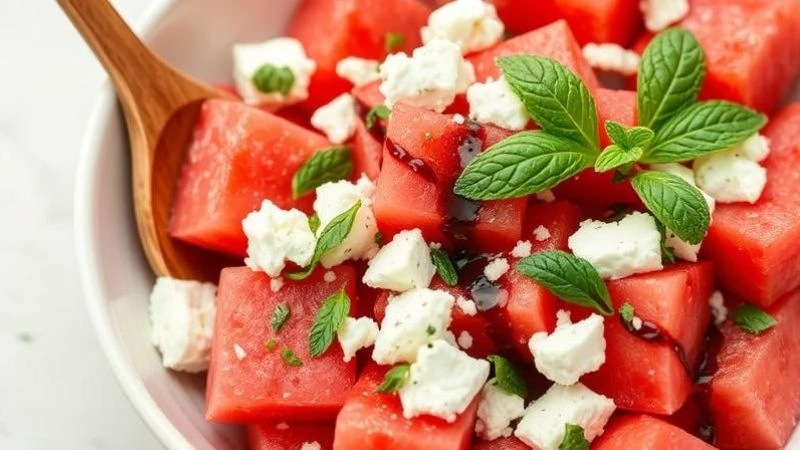

Conclusion – Why Feta Cheese Deserves a Spot in Your Kitchen
Feta cheese isn’t just an ingredient—it’s a culinary superstar that brings flavor, versatility, and a touch of Mediterranean magic to your meals. Whether you’re using Greek feta, Bulgarian feta cheese, or even a feta cheese alternative, this tangy, crumbly cheese has the power to transform simple dishes into something extraordinary. Let’s recap why feta deserves a permanent place in your kitchen:
1. Unbeatable Flavor
- Feta’s tangy, salty profile adds depth to both savory and sweet dishes. From salads to pastas, its bold flavor shines through.
- Varieties like sheep’s milk feta cheese and goat feta cheese offer unique twists, making it a cheese that never gets boring.
2. Incredible Versatility
- Feta is a chameleon in the kitchen. Crumble it over salads, bake it into pastries, or blend it into dips—it works in almost any dish.
- It’s a key player in Mediterranean cuisine but also adapts beautifully to modern recipes like watermelon feta salad or baked feta pasta.
3. Nutritional Benefits
- Packed with protein, calcium, and probiotics, feta is a nutritious addition to your diet.
- It’s lower in calories than many other cheeses, making it a guilt-free way to add flavor to your meals.
4. Easy to Customize
- If you’re out of feta, there are plenty of feta substitutes like halloumi, ricotta salata, or even vegan alternatives.
- You can also adjust its saltiness by soaking it in water or milk before use.
Final Thoughts
Feta cheese is more than just a topping—it’s a celebration of tradition, flavor, and creativity. Whether you’re a seasoned chef or a home cook, experimenting with feta opens up a world of delicious possibilities. So, the next time you’re at the store, grab a block of Greek feta or try Bulgarian feta cheese for a new twist. Your taste buds will thank you!
Call to Action:
Have a favorite feta recipe or a creative way to use this versatile cheese? Share it in the comments below—we’d love to hear from you!
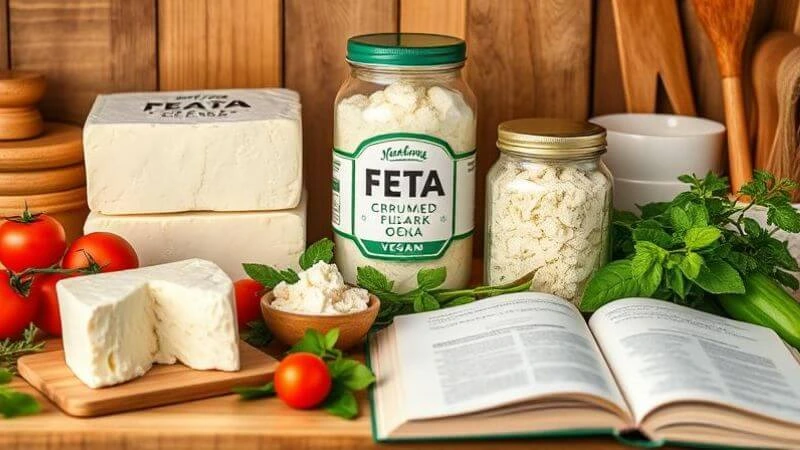

FAQs About Feta Cheese
Feta cheese is a kitchen favorite, but it’s natural to have questions about how to use it, store it, or even swap it out in recipes. Whether you’re a feta enthusiast or just starting to explore its tangy charm, this FAQ section has you covered. From Greek feta to feta cheese alternatives, let’s dive into the most common questions and clear up any confusion.
1. What is feta cheese made from?
Authentic feta cheese is made from sheep’s milk or a blend of sheep’s and goat feta cheese. This gives it a tangy, creamy flavor and crumbly texture.
Be sure to check the label if you’re looking for traditional feta, as some “feta-style” cheeses may use cow’s milk.
2. Can I freeze feta cheese?
Yes, you can freeze feta! Wrap it tightly in plastic wrap or store it in an airtight container. It will keep for up to 3 months.
Keep in mind that freezing may change the texture slightly, making it crumblier. Thaw it in the fridge before using.
3. What’s the difference between Greek feta and Bulgarian feta cheese?
Greek feta is tangy and salty, made primarily from sheep’s milk. It’s protected by PDO (Protected Designation of Origin) status, ensuring its authenticity.
Bulgarian feta cheese is creamier and milder, often made with yogurt cultures. Both are delicious but offer unique flavor profiles.
4. Are there vegan alternatives to feta cheese?
Absolutely! Vegan feta alternatives are typically made from tofu, nuts, or coconut oil. Brands like Violife and Follow Your Heart offer great options.
You can also make your own by marinating tofu or cashews in lemon juice, olive oil, and herbs.
5. How long does feta cheese last in the fridge?
When stored in its brine or a saltwater solution, feta can last up to 2-3 weeks in the fridge.
Always keep it in an airtight container to maintain freshness.
6. What’s the best substitute for feta cheese?
If you’re out of feta, try these alternatives:
Halloumi: Perfect for grilling or frying.
Ricotta Salata: A crumbly, mild cheese ideal for salads.
Queso Fresco: A fresh Mexican cheese with a similar texture.
Vegan Feta: Great for dairy-free diets.
7. Is feta cheese healthy?
Yes! Feta is rich in protein, calcium, and probiotics, which support gut health.
It’s also lower in calories than many other cheeses, making it a great option for weight management.
8. Can I use feta cheese in desserts?
Absolutely! Feta pairs surprisingly well with sweet ingredients like honey, figs, and watermelon. Try it in a dessert cheese platter or a honey-drizzled pastry.
Pro Tip:
If your feta is too salty, soak it in water or milk for 10-15 minutes before using. This simple trick can make a big difference in balancing flavors.



